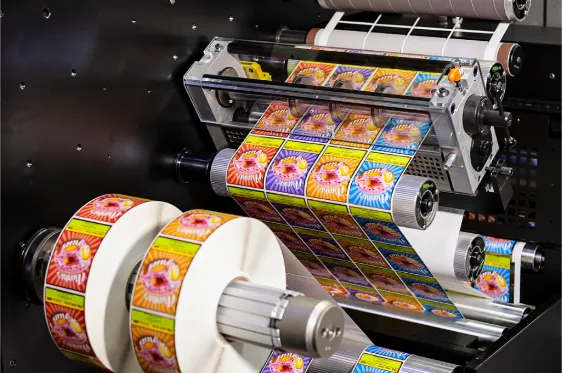
Introduction
Color management plays a crucial role in maintaining consistent and accurate color reproduction in flexographic printing. Effective color management practices ensure that prints meet customer expectations, enhance brand consistency, and minimize waste. In this article, we will outline best practices for color management in flexographic printing, covering various stages of the printing process. By implementing these practices, you can achieve optimal color results with your flexo printing machine.
Calibration and Profiling
Calibration and profiling are essential steps in color management. Calibration involves adjusting color settings on your flexographic printing machine to ensure accurate color reproduction. Profiling, on the other hand, involves creating custom color profiles for your specific printing conditions, considering factors such as ink, substrate, and printing environment. Utilizing color management tools and equipment, like spectrophotometers, can help accurately measure colors and create appropriate profiles for consistent printing results.
Ink Formulation and Mixing
Proper ink formulation and mixing are crucial for consistent color management in flexographic printing. Use high-quality pigments and ensure accurate ink measurements during formulation. Batch-to-batch color consistency should be maintained to minimize color variation. Thorough ink mixing is necessary to ensure uniform pigment dispersion and avoid color streaks or mottling in the printed output. Follow ink manufacturer guidelines and utilize ink management software to achieve precise color mixing ratios.
Color Standardization and Verification
Establishing color standards and verifying color accuracy throughout the printing process are key elements of effective color management. Utilize recognized color standards, such as Pantone® or color reference charts, to communicate and maintain consistent color expectations. Regularly measure and verify color accuracy using color measurement devices to ensure adherence to the established color standards. Compare printed samples against the desired color targets to identify any deviations and make necessary adjustments.
Quality Control and Spot Color Matching
Implementing robust quality control measures is essential for spot color matching and consistency in flexographic printing. Develop a standardized quality control process that includes regular visual inspections of prints, measuring color consistency using spectrophotometers, and assessing dot gain control. Establish clear guidelines for ensuring spot color accuracy, including color tolerances and acceptance criteria. Regularly monitor and adjust process parameters to maintain consistent spot color busniess.
Proper Lighting and Viewing Conditions
Accurate color evaluation and decision-making require proper lighting and viewing conditions. Create a controlled viewing environment with consistent lighting conditions using spectrally balanced lighting solutions. Avoid ambient lighting that may introduce color shifts or deviations. Consider using light booths or viewing cabinets that provide standardized lighting conditions for accurate color assessment. Proper lighting and viewing conditions help ensure that color evaluations remain consistent throughout the printing process.
Collaboration and Communication
Effective collaboration and communication among key stakeholders are crucial for successful color management in flexographic printing. Establish clear lines of communication with designers, customers, and suppliers to convey color expectations and specifications. Provide color proofs or samples for review and approval to align everyone’s expectations. Foster open channels of communication to address any color-related concerns or issues promptly. Regularly engage in discussions on color management best practices and implement feedback for continuous improvement.
Conclusion
Effective color management is essential for consistent and accurate color reproduction in flexographic printing. By following best practices such as calibration and profiling, proper ink formulation and mixing, color standardization and verification, quality control and spot color matching, maintaining proper lighting and viewing conditions, as well as fostering collaboration and communication, businesses can achieve optimal color results with their flexographic printing machines. Implementing these color management practices will help enhance brand consistency, customer satisfaction, and productivity while minimizing waste and rework. Prioritizing color management in flexographic printing ensures that the final printed output meets the intended visual expectations and maintains the highest quality standards.